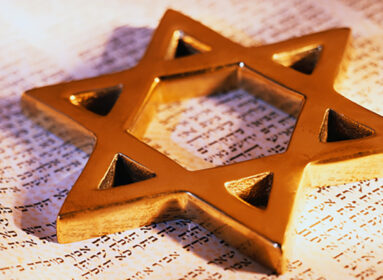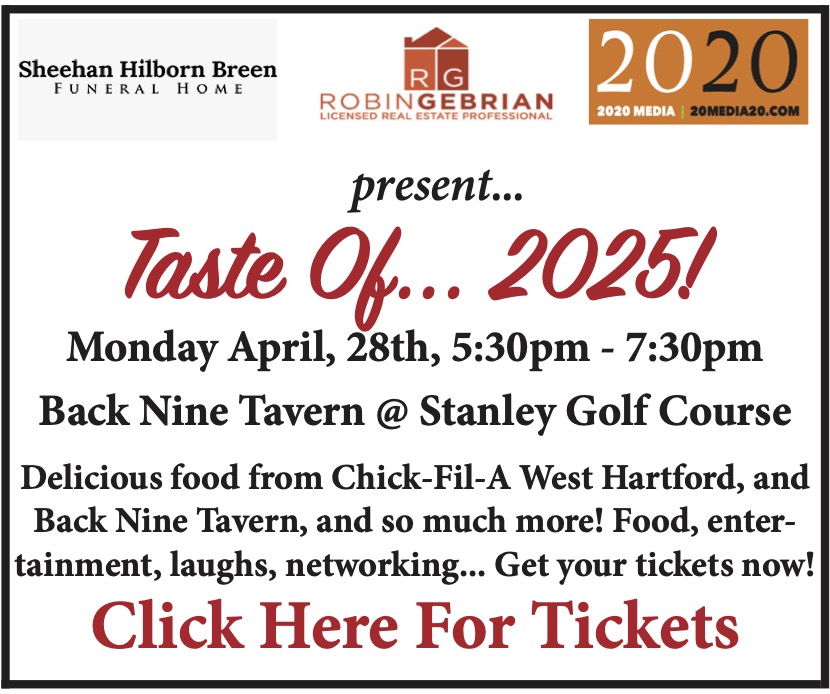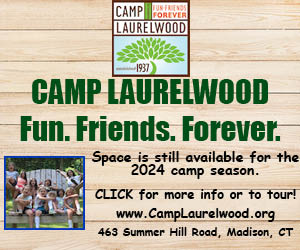Zalmen Mlotek is an internationally recognized authority on Yiddish folk and theater music and a leading figure in the Jewish theater and concert worlds. Raised in a prominent Yiddish-speaking family renowned for its Jewish songbook collections, Mlotek trained as a classical musician and conductor at Juilliard School of Music, the New England Conservatory of Music, the Tanglewood Music Center, Manhattan School of Music, and Mannes School of Music
Mlotek is the artistic director of The National Yiddish Theater-Folksbiene, America’s oldest Yiddish theater. He is also the conductor of The New Yiddish Chorale, which performs Yiddish choral treasures from Gilbert and Sullivan in Yiddish to theater, historical, and folk songs.
Mlotek will direct “My Yiddishe Chanukah,” a free musical Chanukah family celebration on Sunday, Dec. 16 at Temple Beth El in Stamford. Mlotek will lead a klezmer ensemble and singers that include Joanne Borts, star of the Broadway hit show “Once,” Daniella Rabbani, Avi Fox-Rosen, Dmitri Slepovitch, Brian Glassman and Matt Temkin. The evening will also feature a performance by “The Three Cantors” – Asa Fradkin of Temple Sholom in Greenwich, George Mordecai of Temple Beth El in Stamford, and Arik Woldhieim of Congregation Agudath Sholom in Stamford.
Mlotek spoke with the Ledger about how the Folksbiene has evolved, and the current state of Yiddish language and music in the U.S.
Q: Is there one Yiddish or many? To paraphrase Churchill, are Jews “one people divided by a common language?”
A: The specialness of Yiddish is that, while it originated and grew out of Germany, where most of the Jews were living in the 13th and 14th centuries, we’re talking about a language that evolved as Jews moved through Eastern Europe. The origins are from High German, but Yiddish evolved as Jews moved through different parts of Eastern Europe like Poland, Lithuania, and Russia, and absorbed words. Hebrew was always part of Yiddish, of course, because of the siddur and davening. But in each place, Jews adopted different words and accents. If you were from southern Eastern Europe – Poland and Russia – you spoke a certain kind of Yiddish. If you moved to Western Europe, you had a different accent and dialect.
In the late ‘50s, Prof. Uriel Weinreich and the YIVO Institute for Jewish Research standardized the Yiddish orthography. Everything
was spelled a certain way, differently from the Yiddish print from the mid-19th century or the turn of the last century. If you study Yiddish today, it is a literary Yiddish, not a dialectic thing.
Q: How do you make Yiddish accessible to non-Yiddish speakers?
A: One of the themes in the Folksbiene’s latest show, “The Golden Land” – it closed on Dec. 2 but we’re bringing back on Dec. 20 for two weeks – is the fascination with the language of Yiddish in America. As Jews came to this country, their language was Yiddish; it was the language of the street on the Lower East Side. As Jews assimilated and wanted to become American, they started to create plays and theater pieces that used English words, in order to become as American as they could. So, in the show, we include “Vatch Your Step,” a Yiddish song written in 1912. It was a time when the pushcarts were all over the streets, and you couldn’t move and you had to navigate through them. We bring these songs alive in the show. Because we want to broaden the audience, all the dialogue is English but the songs are in Yiddish.
The “My Yiddishe Chanukah” event in Stamford on Dec. 16 is a taste of that; we’re presenting some of the material from “The Golden Land” and also songs from the Chanukah Yiddish canon, created in America as part of the Yiddish school movement, when Jews wanted secular institutions where they could learn Yiddish culture.
One of the singers in “My Yiddishe Chanukah” is Joanne Borts, who is now starring on Broadway in “Once.” She comes from the Yiddish school movement and made her debut on Broadway in a Folksbiene production, “Those Were the Days,” the first and only Yiddish and English show to get two Tony nominations, for direction and the lead actor. “The Golden Land” and the Chanukah program are both bi-lingual experiences. We don’t use supertitles in the play; you’re hearing the story told in English, so that when you hear the Yiddish song, you will know what it means intuitively. We could take the easy way and translate all our songs into English, but the audience would lose something. My six actors didn’t know Yiddish before they were cast in “The Golden Land” and people are amazed to hear them; they sound totally fluent.
We give the audience a little sense or background beforehand of what we’re talking about and then we transport them to this place. Before the show, we have “Instant Yiddish,” where one of the actors will teach the audience a few phrases. For example, “A gezunt af tir,” You should only be well, or literally, “a health on you;” or “Gutn morgn, gelb,” “Good morning, yellow one,” sort of like, “Look who’s talking.”
These are phrases that have so much texture, that you can’t simply translate them but have to act them out, which is why our teachers are actors.”
Q: The Ledger interviewed Mandy Patinkin recently and he talked about learning Yiddish songs with you. He expresses the same sentiment: “Yiddish is such a lyrical language. You hear a word and you don’t even need to know what it means. You just know what it means.” What was it like to work with him?
A: Mandy fell in love with the language; he talks about it with passion, it goes to his kishkes because of Joe Papp and his own roots. I went to his house and he asked me to play my 15 favorite Yiddish songs that I thought would be best for him and he learned them and arranged them and produced them on his “Mamaloshen” CD [in 1998]. A lot of the songs he learned were in “The Golden Land” and he came to see the show.
Q: What is the current state of the National Yiddish Theatre-Folksbiene and where are you hoping to take it?
A: We’re one of the oldest theater companies in the world, among just a handful that have had 98 consecutive seasons as of this year. We’re celebrating our 100th anniversary in 2015 with a festival of Jewish performing arts in New York. We want to celebrate our anniversary but also to show what role Yiddish and Jewish culture had in the fabric of America cultural life. We’re looking at new works, talking with composers and writers; and will invite theater companies from all over the world to participate.
We call ourselves the National Yiddish Theatre because it’s the only one of its kind in America. It has grown from a place that used to present Yiddish shows three times a week to a performing-arts center that includes lectures, concerts, children’s shows, and outreach programs for young people.
We want to have as our mission not to make Yiddish-speakers out of the next generation, but to let people hear the richness of this language so that they can see how it formed their past and who they are as Jews and human beings, and maybe even how it affects their present and future.
For many years, the Yiddish theater suffered a bad reputation: it was produced shoddily, it was for the old people, it was only for Yiddish-speakers or for nostalgic purposes. We’re dispelling all this criticism. Our productions are on a level that competes with any Broadway company, because this culture has the value and worth to be presented in that way.
Our audiences are getting younger all the time. “The Golden Land” speaks to the immigrant population, so it has broad interest. We had a group of 100 African-American fourth graders from Harlem, students from the Avenues World School and high schools, many audience-members who are not Jewish but who want to see how this particular immigrant group assimilated into the country.
Q: How do you define the current level of interest in Yiddish culture and klezmer music, and are the two connected?
A: Klezmer music is the instrumental Yiddish music. If you had to put words to klezmer, which composers do, the language you would hear is Yiddish. The first real klezmer music was heard on the stage of the Yiddish theater. As the music became popular, it became the Jewish wedding music of the time and musicians went from town to town and performed and created orchestras.
The extent of its popularity is such that you can hear in the early strains of Gershwin, Berlin, and Leonard Bernstein, Jewish intonations and modal influences. The klezmer revival in the ‘70s helped and now you can’t find a city in the world that doesn’t have its own klezmer group or several; even if there are no Jews in a city, the musicians have found the music.
For more information on “My Yiddishe Chanukah” call (203) 322-6901.
Comments? Email cindym@jewishledger.com.







 Southern New England Jewish Ledger
Southern New England Jewish Ledger

















